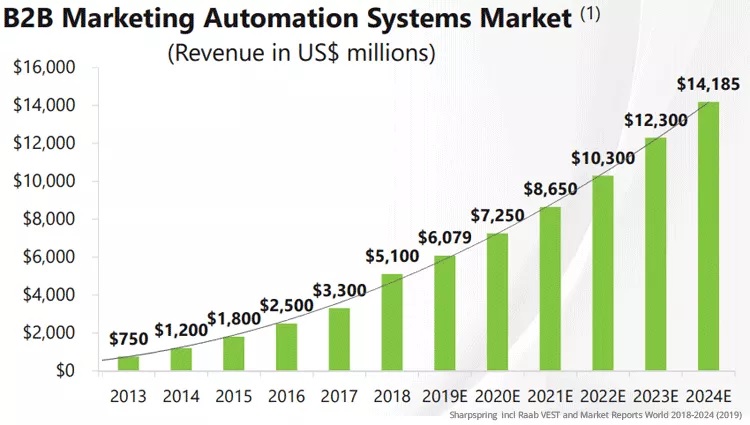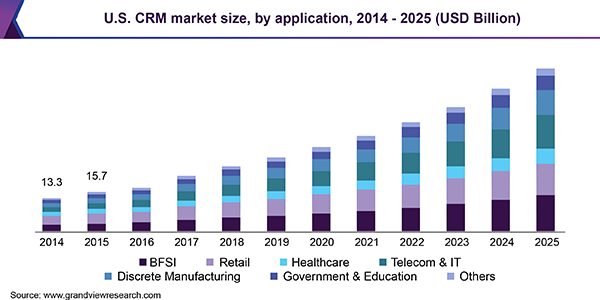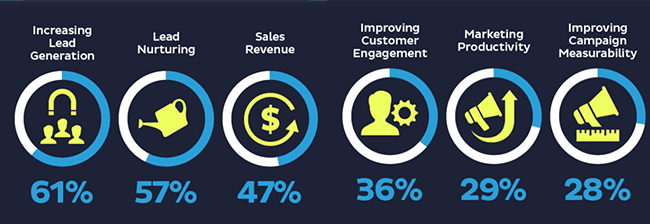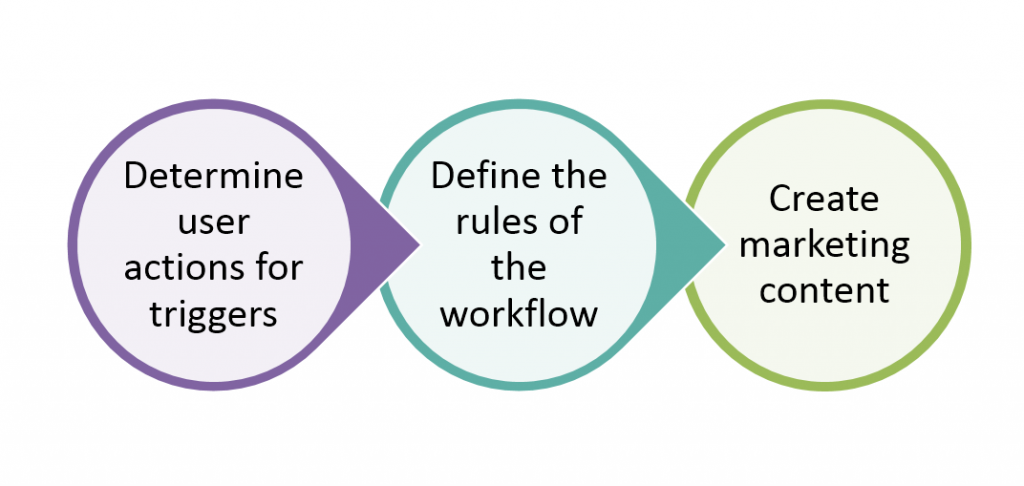Meta description: From de-cluttered workflows and outreach fueled by event triggers to less human error, discover how marketing automation can help your business grow.
One might argue that since digital marketing’s inception, automation has lied in its heart. Automating repetitive tasks had seemingly always seen use in digital spaces, so applying the concept to marketing only served as a natural evolution. Today, marketing automation can help your business grow and thrive, enhancing multiple different practices in fundamental ways. To illustrate, let us devote this article to exploring its forms and just how it can do so.
An introduction to marketing automation
At its core, marketing automation is a simple enough concept. It is the automation of repetitive marketing tasks that require little to no creative oversight. This is typically achieved through dedicated third-party automation software, although social media, CMSs and their plugins, and other platforms and assets may also provide such options.
Today, marketing automation boasts tremendous popularity, as 51% of all companies are already using it. In turn, the marketing automation software market experiences substantial growth, with Statista predicting it will “grow at a CAGR of 19.2 percent between 2020 and 2025”. In numbers, the industry’s 2019 $6 billion size seems set to almost triple by 2025. Even as regards B2B specifically, despite its unique challenges, forecasts remain very consistent with Statista’s:

Alt-tag: A graph on B2B marketing automation systems market’s expected growth.
Marketing automation use cases
Marketing is a very broad field, however. In turn, marketing automation can help your business grow through multiple different applications, depending on your specific goals and needs. Three of the most notable use cases for it are the following.
#1 Email campaigns
Email marketing remains a powerful digital marketing mainstay, with excellent Return on Investment (ROI). Email also remains the primary communication tool of most businesses, so automation could only expand to meet its needs.
Email marketing automation offers to automate emails based on customizable event triggers. Such triggers may include actions taken, lead status, segment-based scheduling, and more. These offer unparalleled convenience and demonstrable benefits, as we will cover next.
#2 Social media marketing
Another prominent marketing channel lies in social media. Expanding platforms offered marketers access to vast untapped audiences and still serve as the primary brand awareness generators for many.
Still, social media is an inherently challenging marketing front, as audiences increasingly value authentic engagement over hard-sell outreach. In this regard, automation seeks to both streamline the process and prevent problems on social media, avoiding mistakes such as inconsistent schedules and suboptimal audience insights collection..
#3 Customer Relationship Management (CRM)
Finally, as companies increasingly value customer interaction quality, CRM emerged as a series of practices seeking to ensure it. This gave rise to dedicated CRM software, whose most basic features now include automation of focus-specific types.
Reflecting the overall growth of automation software, CRM is now the single largest software market in the world. Forecasts also outline a continued upward trajectory, at that:

Alt-tag: A graph on the expected growth of the CRM market size in the US.
Source: https://www.grandviewresearch.com/static/img/research/us-crm-market.png
How marketing automation can help your business grow
With all of the above in mind, we may now pinpoint exact benefits of marketing automation across different applications. For the sake of text economy, we will focus on 4 among the most notable ones.
#1 Better lead generation and lead nurturing
Among the primary concerns of any business come lead concerns. Even the most robust lead generation, acquisition, and conversion systems may have room for improvement, which directly translates to revenue.
In this regard, automation offers distinct benefits for each phase:
- Lead generation and acquisition. Simple email automation can drastically improve response times to new lead queries, and let businesses swiftly respond to actions taken. Studies find that response times alone can have a drastic impact in this phase.
- Lead nurturing. Once leads enter your sights, further email triggers, CRM segmentation, and other forms of automation can visibly benefit lead nurturing. This includes re-engaging old and lapsed leads, where personalization is key.
- Conversion. Finally, automated outreach, personalized offers, better customer service through query delegation automation, and similar practices can enhance conversion rates. Proper nurturing alone can offer significant benefits in this regard, as Campaign Monitor finds.
This may be the most substantial way in which marketing automation can help your business grow, all in all. Indeed, most marketers prioritize lead-related improvements over most else:

Alt-tag: An infographic on marketers’ most coveted benefits of marketing automation.
Source: https://startupbonsai.com/wp-content/uploads/2020/01/Statistic-7-Marketing-Automation-Statistics.png
#2 Better omni-channel marketing
Similarly, omni-channel marketing presents immense opportunities – and considerable challenges. Marketers have to focus on different content distribution channels as their companies expand to meet customers’ expectations.
Marketing automation rises to the challenge, in many cases directly evolving to do so. Its benefits in this regard can expand to, among others:
- Segmentation. Smart segmentation and automatic lead scoring can save marketing departments considerable time and enhance their efficiency.
- Content distribution. Personalized, conditional, action-driven, and other types of content distribution can further enhance lead nurturing and help secure more sales.
- Interaction management. Finally, channel consolidation and automatic notifications can notably improve interaction quality, facilitating deeper bonds, more customer trust, and more customer satisfaction (CSAT) overall.
Of course, exact automation applications will vary depending on each marketer’s scope and existing assets. However, as the ongoing pandemic continues to fragment customer journeys, omni-channel marketing should remain a prominent approach.
#3 A streamlined workflow and less human error
Another inherent benefit of marketing automation lies in more streamlined workflows. In turn, automatic data entry and trigger-dependent outreach can minimize the room for human error, which remains a performance inhibitor.
Examples of workflows one may automate and streamline include:
- “Welcome” workflow, triggered by signups
- Re-engagement workflow, based on specifically defined periods of inactivity
- Cart abandonment workflow, triggered on cart abandonment
In all such cases, automation offers to circumvent human involvement until creative input is needed – thus reducing human error. Of course, each workflow automation type will differ, but they will all follow a similar trigger-based structure:

Alt-tag: An illustration of the typical workflow automation structure.
Source: https://blog-assets.freshworks.com/freshsales-crm/wp-content/uploads/2021/03/23131733/triggers-3-1024×486-1.png
#4 Enhanced productivity and better time management
Finally, another inherent benefit of marketing automation comes in the form of better time management and enhanced productivity. Jared Atchison, the co-founder of WPForms, expresses this in the simple truism that “[p]utting energy into smaller tasks […] wastes valuable time you could spend maximizing profit and nurturing leads”.
Automation’s productivity benefits can notably include:
- Expanding operations outside of regular working hours
- De-cluttering daily schedules for more creative output
- Swifter reactive actions through task delegation and automatic notifications
In combination, such benefits can have a massive effect on both final revenue and cost. Studies quantify the potential operational cost benefit as up to 30%, a substantial benefit to any business.
Conclusion
In summary, marketing automation can help your business grow in a plethora of ways. At its core, it offers unprecedented convenience and an invaluable time management asset. Problem-solving applications may manifest these qualities in personalized outreach, more efficient lead nurturing, enhanced internal communications, and more. As such, as digital marketing expands to more channels and faces new challenges, automation will likely remain an indispensable asset.





